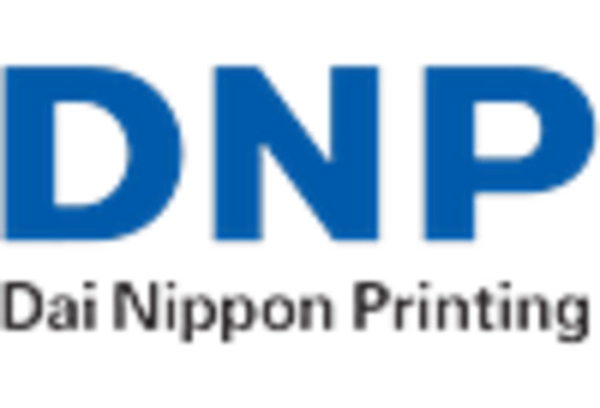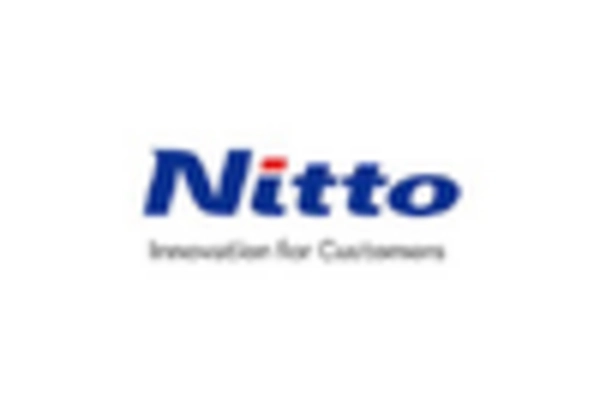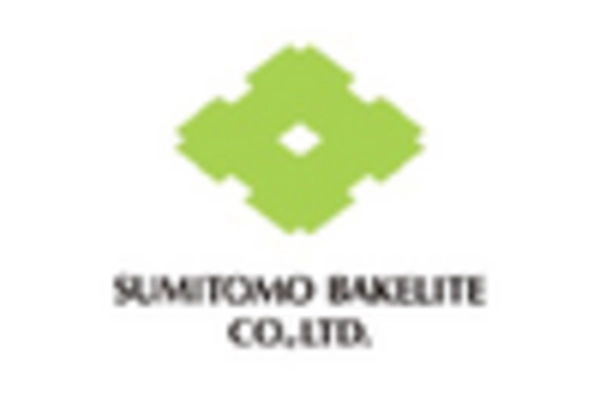Growth in Consumer Electronics
The Anisotropic Conductive Film Market is significantly driven by the growth in consumer electronics. As the demand for high-performance electronic devices continues to rise, manufacturers are increasingly turning to anisotropic conductive films for their superior electrical and thermal conductivity properties. The market for consumer electronics is expected to expand, with projections indicating a growth rate of approximately 7% annually. This growth is fueled by the continuous innovation in product design and functionality, leading to a higher integration of electronic components. Anisotropic conductive films are essential in ensuring reliable connections in compact devices, making them a preferred choice among manufacturers. As consumer preferences evolve towards more advanced and multifunctional devices, the anisotropic conductive film market is likely to benefit from this upward trend.
Miniaturization of Electronics
The trend of miniaturization in electronics is a significant driver for the Anisotropic Conductive Film Market. As devices become smaller and more compact, the need for effective interconnect solutions that can fit into limited spaces is paramount. Anisotropic conductive films provide a unique solution by allowing for high-density packaging of electronic components without compromising performance. The market is projected to reach a valuation of several billion dollars in the coming years, largely due to the increasing demand for compact electronic devices in sectors such as consumer electronics, automotive, and medical devices. This trend is likely to continue as manufacturers seek to create smaller, lighter, and more efficient products. Consequently, the anisotropic conductive film market is expected to expand as it plays a crucial role in enabling the miniaturization of electronic components.
Rising Demand in Automotive Applications
The Anisotropic Conductive Film Market is witnessing a notable increase in demand from the automotive sector. With the rise of electric vehicles and advanced driver-assistance systems, the need for reliable and efficient interconnect solutions is becoming more critical. Anisotropic conductive films are being utilized in various automotive applications, including sensors, displays, and control units, due to their ability to provide robust connections in challenging environments. The automotive industry is projected to account for a significant share of the anisotropic conductive film market, with estimates suggesting a growth rate of around 10% in this segment over the next few years. This trend indicates a shift towards more sophisticated electronic systems in vehicles, further driving the demand for anisotropic conductive films as essential components in modern automotive technology.
Sustainability and Eco-Friendly Materials
The Anisotropic Conductive Film Market is increasingly influenced by the growing emphasis on sustainability and eco-friendly materials. Manufacturers are under pressure to adopt environmentally responsible practices, leading to the development of anisotropic conductive films that are less harmful to the environment. The market is witnessing a shift towards materials that not only meet performance standards but also align with sustainability goals. This trend is reflected in the increasing number of companies investing in research and development to create biodegradable or recyclable anisotropic conductive films. As consumers become more environmentally conscious, the demand for sustainable products is expected to rise, potentially increasing the market share of eco-friendly anisotropic conductive films. This shift may also encourage traditional manufacturers to innovate and adapt their product lines to meet these new consumer expectations.
Technological Advancements in Electronics
The Anisotropic Conductive Film Market is experiencing a surge due to rapid technological advancements in electronics. Innovations in consumer electronics, such as smartphones and tablets, have increased the demand for efficient interconnect solutions. The market for anisotropic conductive films is projected to grow at a compound annual growth rate of approximately 8% over the next five years. This growth is driven by the need for high-performance materials that can facilitate the miniaturization of electronic components while ensuring reliable connections. Furthermore, advancements in manufacturing processes are enhancing the quality and performance of anisotropic conductive films, making them more appealing to manufacturers. As electronic devices become more complex, the reliance on anisotropic conductive films for effective signal transmission and power distribution is likely to intensify, thereby propelling the market forward.


















Leave a Comment